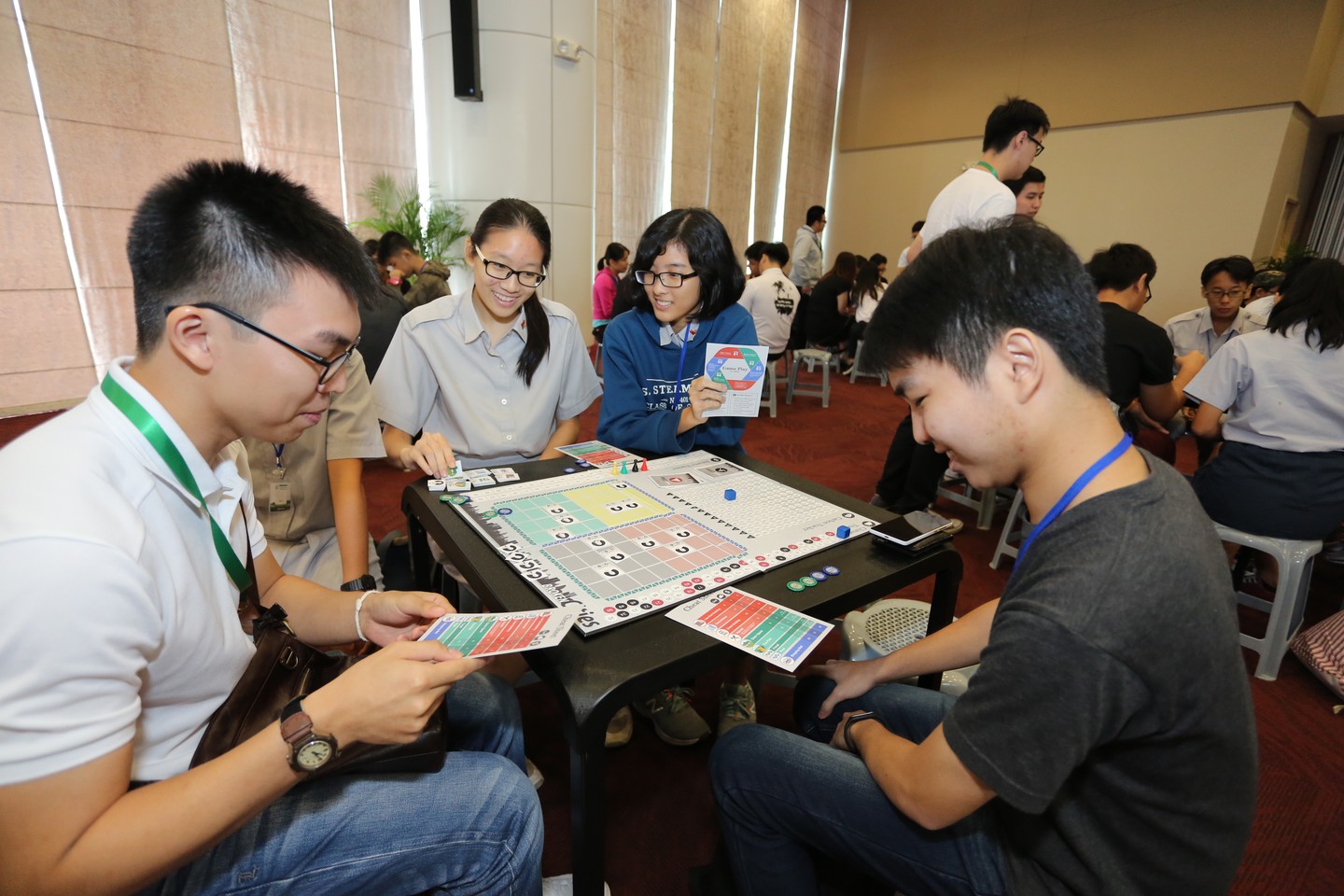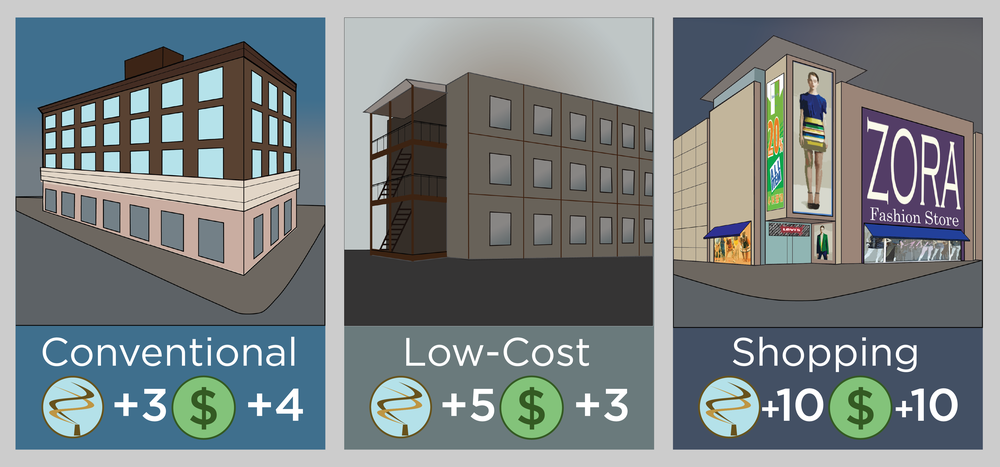Games for Cities
Broken Cities (2011)
various locations
Developed by:
Educational board game integrating climate science into planning processes by addressing tensions between green and traditional building practices in cities.

City makers consistently face a pertinent dilemma: should they build cheap and chase profit or build green and boost sustainability? The reality of the dilemma is widespread, the associated challenges complex, and the true costs and benefits often misunderstood – particularly in the case of climate change, where science is poorly integrated into planning. Broken Cities serves to break down miscommunication among scientists, academics and planners, while stimulating pragmatic learning and constructive dialogue around climate change adaptation and mitigation at the city scale.
Broken Cities is played on a board with sets of four or more players. Role-playing as builders developing a new city in Scandinavia, players must balance the provision of housing for a continuous influx of new residents against the environmental impact of their construction techniques. Choices are high polluting, rapid low-cost housing, mid-range housing and green housing. The game is carefully designed to challenge players to explore green strategies, pressuring them to adapt in order to meet the city’s rising housing demand and hold their place in a competitive economy. Green building however is not necessarily a solution to, for instance, lowering greenhouse gas emissions. The game mirrors this real-world scenario by introducing a government policy dimension calling for teams to address self-limiting emissions at the municipal level in response to the reality of steadily rising atmospheric emissions. Players who pursue profit over environment trigger national level government intervention and collective damages.
The game was designed in order to present the theory of climate change adaptation and mitigation in an immersive real-life scenario, and thereby to encourage conversations about the disconnect between scientific theory and the pragmatic realities of living with climate change. As such, it is effective at addressing general aspects of the problem and communicating this to a broad audience who may have little to no familiarity with the subject.

